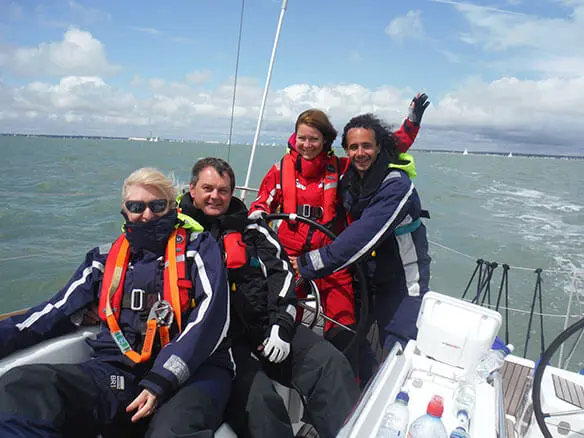RYA Sailing Courses in Southampton, the Solent & London
Learn to sail or advance your skills with RYA-certified practical and shorebased sailing courses in Southampton, the Solent, and London. Expert instructors, modern yachts, and friendly classes help you gain recognised qualifications from Competent Crew to Yachtmaster.
RYA Practical Sailing Courses
Practical sailing courses for all experience levels, get qualified to sail with an RYA certified course with First Class Sailing. Based in London with practical and theory courses taking place across the South.
Learn MoreRYA Practical Sailing CoursesRYA Theory Courses
Classroom based sailing courses for all experience levels, get qualified to sail with an RYA certified course with First Class Sailing, London.
Learn MoreRYA Theory CoursesOne Day RYA Courses
One Day RYA Courses: VHF Radio, Sea Survival, Offshore Safety, Radar, First Aid, Diesel Engine Maintenance
Learn MoreOne Day RYA CoursesRYA Online Sailing Courses
Learn to sail and become RYA certified with theory courses from First Class Sailing. Online and classroom based courses available to book online.
Learn MoreRYA Online Sailing CoursesExpert RYA Sailing Training for Every Level
Whether you’re taking your first step afloat or working towards professional qualifications, First Class Sailing offers the full range of RYA sailing courses. Choose practical courses on the Solent or shorebased theory classes in Southampton and London — all taught by experienced instructors who make learning engaging, safe, and fun.
Every course builds real confidence through hands-on experience, from calm harbour manoeuvres to challenging tidal navigation. You’ll master seamanship, safety, and teamwork while earning internationally recognised RYA qualifications.
👉 View upcoming course dates, compare prices, and book your place with First Class Sailing today.
Fun
Want to learn to sail in a calm, comprehensive way with plenty of time to ask questions and practice on the water? Go First Class! well maintained boats, excellent (and patient!) instructors. Well recommended

Ed R
Verified Customer






Why Take an RYA Course with First Class Sailing
When you train with us, you’re in safe hands. Our yachts are meticulously maintained, our instructors are passionate sailors, and our teaching is personal and supportive. The Solent offers ideal waters for learning — varied, scenic, and perfectly suited to building real-world sailing skills.
Whether you learn ashore in London or Southampton or on the water from Southampton on the Solent, you’ll enjoy small-group training that combines professionalism with a spirit of adventure.
Further reading on RYA training
Learn more about the value of RYA training and the RYA itself in these two blogs:
Why Take an RYA Course with First Class Sailing
